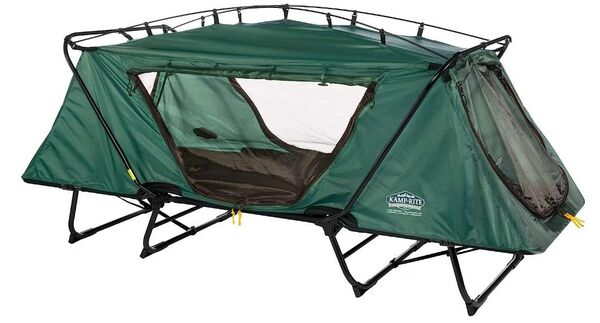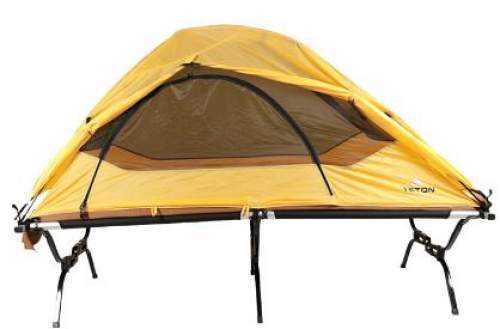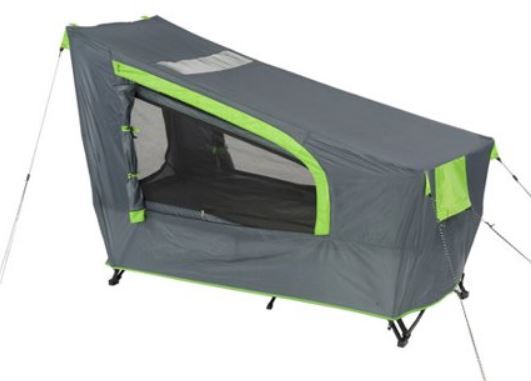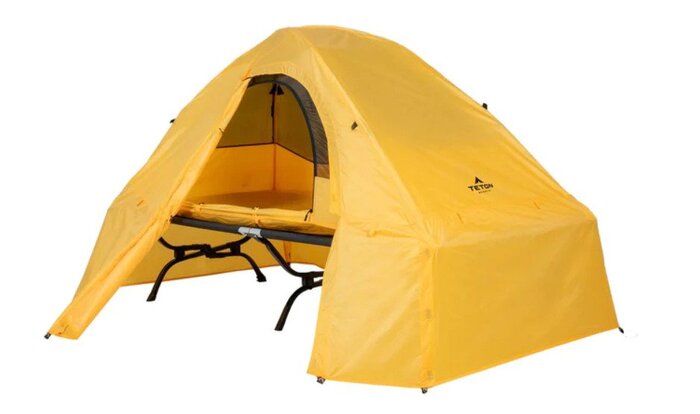Discover the magic of cold-weather camping with cot-tents! From gear selection to expert tips, embark on cozy adventures amidst winter’s embrace.
Introduction
Camping has always been a cherished pastime, offering a unique opportunity to connect with nature and disconnect from the hustle and bustle of everyday life.
Among the myriad camping options available, cot-tents have gained popularity for their practicality and comfort. But what about using cot-tents in colder climates?
As the mercury drops and winter enthusiasts yearn for the solitude of the great outdoors, the question arises: Are there cot-tents suitable for use in colder climates?
Cot-tents, a hybrid of cots and tents, provide an elevated sleeping surface with a protective shelter overhead. They offer the promise of a good night’s sleep, away from the uneven ground and crawling critters that often accompany traditional camping.
Yet, as anyone who’s braved the biting cold of winter camping can attest, the appeal of cot-tents in colder climates is met with its fair share of challenges. The cold can seep in from all angles, and the wrong choice of cot-tent and other equipment can quickly turn a winter adventure into a frigid ordeal.
It is fair to say that, as of the moment of writing this text, there are no cot-tents or tent-cots that are specifically designed for colder climates. However, the fact is that most of them are naturally more suitable for such an environment than for a hot weather summer camping.
Understanding Cot-Tents or Tent-Cots
Cot-tents, an ingenious fusion of cots and tents, have carved out a niche in the camping world, offering a unique blend of comfort and convenience for outdoor enthusiasts.
To assess their suitability for colder climates, it’s crucial to grasp what cot-tents are, their advantages, common materials used, and the inherent limitations.
What Are Cot-Tents?
At their core, cot-tents are an innovative solution to the age-old challenge of finding a comfortable sleeping arrangement in the wilderness. These versatile structures consist of two primary components:
Cot: The cot portion provides an elevated sleeping platform. Elevated above the ground, campers are shielded from rocks, roots, and dampness, ensuring a more restful night’s sleep.
Tent: The tent component, which is typically mounted on the cot frame, serves as a shelter. It protects campers from the elements, including rain, wind, and insects, ensuring a cozy and bug-free night’s sleep.
Advantages of Cot-Tents
Comfort: Elevating the sleeping platform eliminates the discomfort of sleeping on uneven terrain and provides better insulation from the ground’s cold.
Convenience: Setting up cot-tents is generally quicker and more straightforward than most of traditional tents, making them an excellent choice for campers who want to save time and effort.
Protection: Cot-tents offer a barrier against rain, wind, and insects, providing a secure and comfortable sleeping environment.
Portability: Many cot-tents are designed to be compact and lightweight, making them easy to transport. Some of them are suitable even for backpackers.
Common Materials Used in Cot-Tent Construction
Cot-tents are crafted using various materials, each with its own set of characteristics and advantages:
Frame: Typically constructed from lightweight, durable materials like aluminum or steel.
Fabric: The tent portion is commonly made of polyester or nylon, which is often treated for waterproofing and UV resistance.
Zippers and Fasteners: High-quality zippers and fasteners ensure the tent remains securely closed and protected from the elements.
Limitations of Cot-Tents in Colder Climates
While cot-tents offer numerous benefits, they are not without limitations, particularly in colder climates:
Lack of Insulation: There are no insulated tent-cots or cot-tents currently on the market. So you can feel them colder than insulated tents that are indeed available.
Condensation: Due to limited airflow, cot-tents can be prone to condensation buildup, which can be problematic in cold conditions. But in that view, they are not much different than traditional tents.
Wind Exposure: Elevated cots can be more exposed to the wind, in most cases aerodynamics is not their best feature.
Understanding these key aspects of cot-tents sets the stage for a deeper exploration of their suitability for colder climates, a topic we will delve into further in this post.
Factors to Consider in Colder Climates
When contemplating the use of cot-tents in colder climates, several critical factors demand your attention. These considerations can make the difference between a cozy winter camping experience and a bitterly cold ordeal.
Insulation
Colder climates demand superior insulation. Common options include foam padding and down-filled sleeping bags.
Wind Resistance
Wind can quickly sap heat and make you feel much colder than the actual temperature. Cot-tents with windproof features, such as sturdy frames and well-anchored rainflies, are essential for cold-weather camping.
Snow and Moisture Management
- Snow Load Capacity of Cot-Tents: Camping in snowy conditions requires cot-tents with adequate snow load capacity. This parameter has never mentioned in specifications of tent-cots. So you have to assess this capability simply by inspecting the tent shape and frame strength, to avoid any unexpected collapses under heavy snowfall.
- Waterproofing and Moisture Protection: Moisture can be a silent enemy in colder climates. It is best to test your tent-cot in controlled conditions, close to home, before going on an outdoor trip.
Ventilation
- Preventing Condensation and Frost: Condensation and frost can be particularly problematic in cold weather. Luckily, there are true double-layer tent-cots on the market, such a construction is the best way to reduce condensation which normally is always present as a problem in tents of any kind.
- Importance of Proper Airflow in Colder Climates: Ventilation is key to regulating humidity and preventing the buildup of moisture inside your cot-tent. But here too, there are great options on the market with such features.
Cot-Tents Suitable for Colder Climates
Now that we’ve delved into the essential factors to consider, let’s turn our attention to cot-tents that may excel in colder climates.
Several brands and models have earned a reputation for their exceptional performance in most weather conditions, including cold-weather.
Kamp-Rite: This brand has been around for many years, and they have several tent-cots that remain popular, and this for good reasons. They have them both for solo use and for two people.
The Kamp Rite Oversize Tent Cot shown in the picture is one of their best known tent-cots that has been around for many year:

Teton Sports: They have several best-selling cots on the market. But they also make tents that can be attached to such cots, and they have warm sleeping mats as well.
The picture below shows one set of this type:

Ozark Trail: This brand has a few tent-cots on the market, double-layer type, ventilated, and easy to use. The picture bellow shows one of them, the Ozark Trail Instant Tent Cot:

Price Range and Budget Considerations
When it comes to price, all these tent-cots are surprisingly affordable. So no matter which of them you choose, they will not break the bank.
User Reviews and Recommendations
Before making your final decision, it’s wise to delve into user reviews and recommendations. These insights from fellow campers who’ve ventured into the cold can provide invaluable guidance. Look for:
- Overall Satisfaction: Pay attention to campers’ overall satisfaction with their chosen cot-tents in cold conditions. Positive reviews can be reassuring.
- Performance in Cold Weather: Specifically, seek feedback on how well a cot-tent performs in cold climates. Did it keep users warm and comfortable? Did it hold up in windy or snowy conditions?
- Durability: Reviews often touch on the longevity of cot-tents. This can be crucial, especially if you plan to use your cot-tent for multiple seasons.
- Ease of Setup: Consider how easy or difficult the cot-tent was to set up in cold weather. Quick and hassle-free setup can be a game-changer in chilly conditions.
With these insights, you’ll be better equipped to choose a cot-tent that aligns with your budget and needs for cold-weather camping.
Weight Capacity
This is of importance if you are a very heavy person. But no worry, the tent-cots from Teton Sports are the champions in this regard. The same holds for Kamp-Rite models.
V. Tips for Cold Climate Camping with Cot-Tents
Now that you’re armed with knowledge about cot-tents suitable for colder climates, let’s explore some practical tips to ensure your cold-weather camping experience is not only bearable but enjoyable.
A. Proper Site Selection
Choosing the right campsite is crucial for cold-weather camping:
- Elevation: Consider camping at a lower elevation where temperatures are milder. But do you know what a frost pocket is? Bear this in mind when you choose your camping spot.
- Wind Shelter: Look for natural windbreaks like hills or dense tree lines to shield your cot-tent from strong winds.
- Proximity to Water: Avoid camping too close to bodies of water, as they can make the air feel even colder.
- Snow-Free Zone: Clear snow from your campsite to create a stable foundation for your cot-tent.
B. Insulation and Sleeping Gear
- Quality Sleeping Bag: Invest in a high-quality cold-weather sleeping bag rated for the lowest expected temperatures.
- Insulated Sleeping Pad: Use an insulated sleeping pad to provide an additional barrier from the cold ground.
- Layered Bedding: Layer your bedding with warm blankets and thermal liners for added insulation.
C. Clothing and Layering
- Layer Up: Wear multiple layers of clothing to trap heat close to your body. Opt for moisture-wicking fabrics to stay dry.
- Hat and Gloves: Keep a warm hat and gloves handy to retain heat where it matters most.
- Warm Socks: Don’t underestimate the importance of warm, moisture-wicking socks.
D. Cooking and Food Storage Considerations
- Stove Choice: Use a reliable camp stove for cooking, as it’s more efficient than an open fire in cold weather.
- Food Choice: Plan warm, hearty meals that provide ample energy and warmth.
- Bear in Mind Fuel: Cold weather can affect the performance of fuel canisters, so bring extra and store them in a warm place.
E. Safety Precautions
- Emergency Gear: Always have emergency gear on hand, including a first aid kit, communication devices, and a winter survival kit.
- Weather Monitoring: Keep a close eye on weather forecasts and be prepared to adjust your plans if conditions worsen.
By applying these tips alongside your knowledge of cold-weather cot-tents, you’ll be well-prepared for an enjoyable and memorable winter camping experience.
Final thoughts
In conclusion, the world of camping has seen a remarkable evolution with the advent of cot-tents, offering a unique combination of comfort and convenience for outdoor enthusiasts.
However, as we explored in this discussion, the suitability of cot-tents for colder climates comes with its own set of challenges.
While there are no cot-tents specifically designed for extreme cold weather camping, many models on the market offer features that make them more suitable for such conditions than traditional tents.
These include sturdy frames, windproof designs, and double-layer constructions to combat condensation and frost buildup. Brands like Kamp-Rite, Teton Sports, and Ozark Trail have garnered positive reviews from cold-weather campers, providing options that cater to various budgets and preferences.
To ensure a successful cold-weather camping experience with a cot-tent, it’s essential to consider factors like insulation, wind resistance, snow and moisture management, and proper ventilation.
Additionally, user reviews and recommendations can offer valuable insights into the performance and durability of specific cot-tents in cold conditions.
To maximize your comfort and safety during cold-weather camping with a cot-tent, careful site selection, appropriate insulation and sleeping gear, layered clothing, and thoughtful cooking and food storage choices are crucial.
Always prioritize safety precautions and stay informed about weather forecasts to adjust your plans as needed.
In the end, while cot-tents may not be a panacea for extreme cold weather camping, they can provide a comfortable and convenient shelter option for those who are well-prepared and willing to adapt to the challenges posed by winter conditions.
With the right knowledge and equipment, camping in colder climates can be a rewarding and unforgettable adventure.
Let me know if you have questions, there is a comment box below. Bookmark this site and keep as a reference. Thank you for reading.

